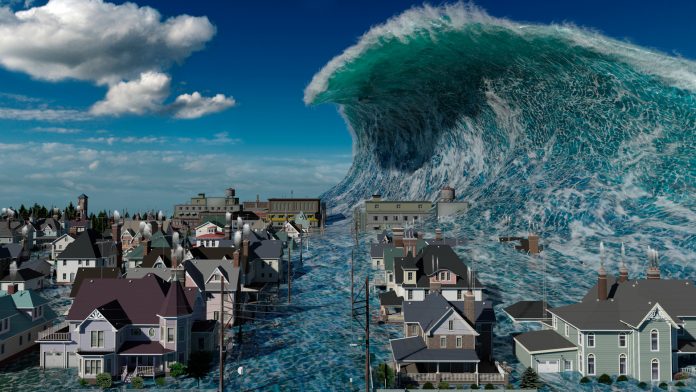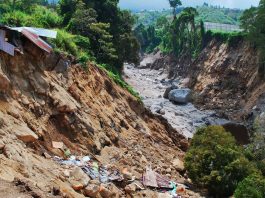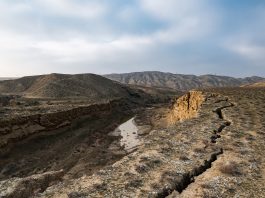A team of Japanese researchers have invented a neoteric method that is capable of simulating landslide tsunamis, enhancing the understanding of the natural disaster.
The researchers from the Tohoku University have implemented a novel numerical method that is proficient in simulating landslide tsunamis, providing crucial data that can help form a comprehensive understanding of a devastating type of natural disaster of which knowledge is currently insufficient.
Their findings are published in the journal Computational Mechanicson.
Landslide Tsunamis are ruinous natural disasters that cause substantial destruction to life and infrastructure each year and are initiated by submarine, and subaerial landslides – landslides that occur under the sea or on land – these destructive phenomena can cause further damage to pipelines and submarine cables.
Despite being so fatal, the mechanisms responsible for landslide tsunamis remain incredibly mysterious, with the multifaceted interactions that occur make predicting such events challenging. The relationship between the collapsing of the seabed and the behaviour of the soil and seawater makes previous methods for forecasting landslide tsunamis with accuracy extremely imprecise.
Nevertheless, the team’s new numerical strategy poses a revolutionary step by proposing a new hybrid simulation method that can identify the complex interactions between soil structure, comprised of granular masses, and liquids.
Kenjiro Terada, professor at Tohoku University’s International Research Institute of Disaster Science and co-author of the study, said: “Our novel method couples together two computational methods that analyse the interactions of solids and liquids: the finite element method (FEM) along with the material point method (MEM).”
By utilising the algorithm, the team accurately simulated a wave mimicking submarine granular collapse and a further wave induced by subaerial slide on an inclined plane, with their simulations achieving exceptional accuracy with the numerical measurements. Furthermore, it was determined that the innovative strategy could be used in the cases of other natural disasters that contain water, air, and solid properties.
The team are now aiming to apply their research to real data of a larger scale to further improve the accuracy of the method.









